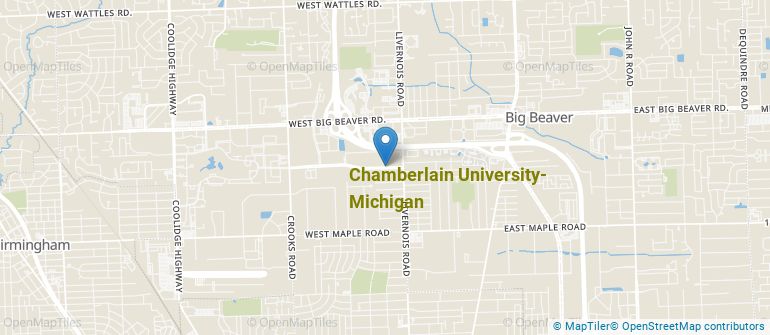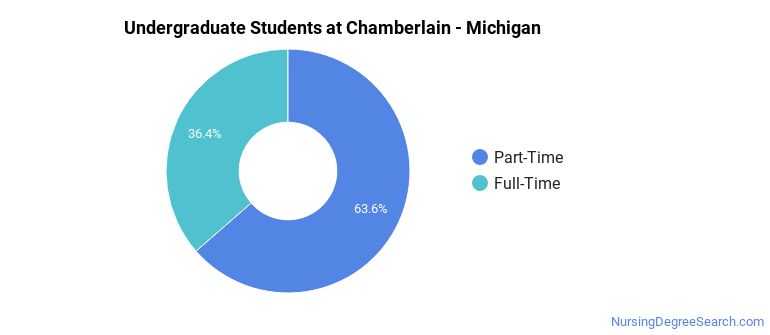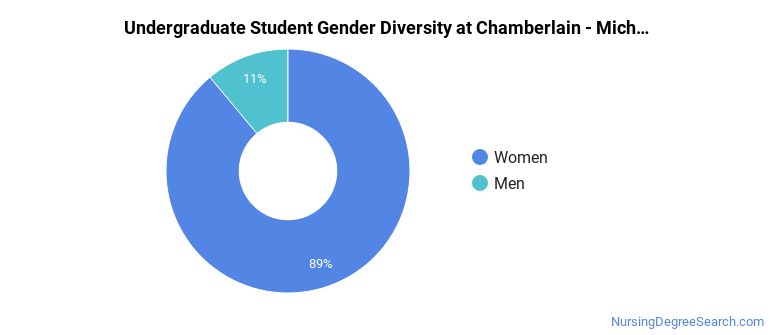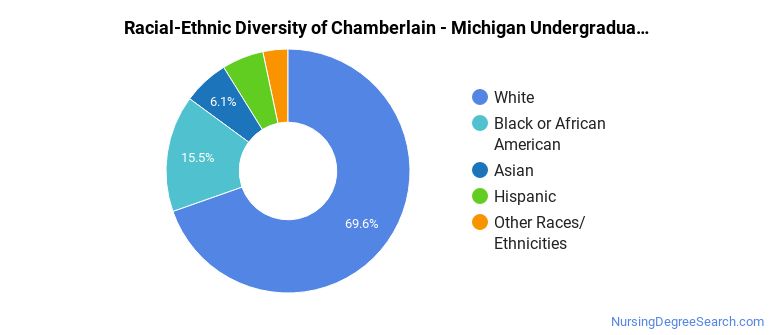Chamberlain University - Michigan Nursing Programs
Located in Troy, Michigan, Chamberlain University - Michigan is a private for-profit institution. Troy is a great location for students who prefer city over country life.
Where Is Chamberlain University - Michigan?

Contact details for Chamberlain - Michigan are given below.
| Contact Details | |
|---|---|
| Address: | 200 Kirts Boulevard, Suite C, Troy, MI 48084 |
| Phone: | 248-817-4140 |
| Website: | www.chamberlain.edu |
How Do I Get Into Chamberlain - Michigan?
You can apply to Chamberlain - Michigan online at: https://community.chamberlain.edu/s/application
Admission Requirements for Chamberlain - Michigan
| Submission | Required? |
|---|---|
| High School GPA | 1 |
| High School Rank | 3 |
| High School Transcript | 1 |
| College Prep Program | 3 |
| Recommendations | 3 |
| SAT or ACT Scores | 5 |
| TOEFL | 5 |
How Hard Is It To Get Into Chamberlain - Michigan?
Can I Afford Chamberlain University - Michigan?
Student Loan Debt
While almost two-thirds of students nationwide take out loans to pay for college, the percentage may be quite different for the school you plan on attending. At Chamberlain - Michigan, approximately 100% of students took out student loans averaging $5,500 a year. That adds up to $22,000 over four years for those students.
Chamberlain University - Michigan Undergraduate Student Diversity

Gender Diversity
Of the 181 full-time undergraduates at Chamberlain - Michigan, 11% are male and 89% are female.

Racial-Ethnic Diversity
The racial-ethnic breakdown of Chamberlain University - Michigan students is as follows.

| Race/Ethnicity | Number of Grads |
|---|---|
| Asian | 11 |
| Black or African American | 28 |
| Hispanic or Latino | 10 |
| White | 126 |
| International Students | 0 |
| Other Races/Ethnicities | 6 |
Chamberlain University - Michigan Nursing Concentrations
The table below shows the number of awards for each concentration.
| Major | Bachelor’s | TOTAL |
|---|---|---|
| Registered Nursing | 122 | 122 |
| TOTAL | 122 | 122 |
References
*The racial-ethnic minorities count is calculated by taking the total number of students and subtracting white students, international students, and students whose race/ethnicity was unknown. This number is then divided by the total number of students at the school to obtain the racial-ethnic minorities percentage.
More about our data sources and methodologies.
